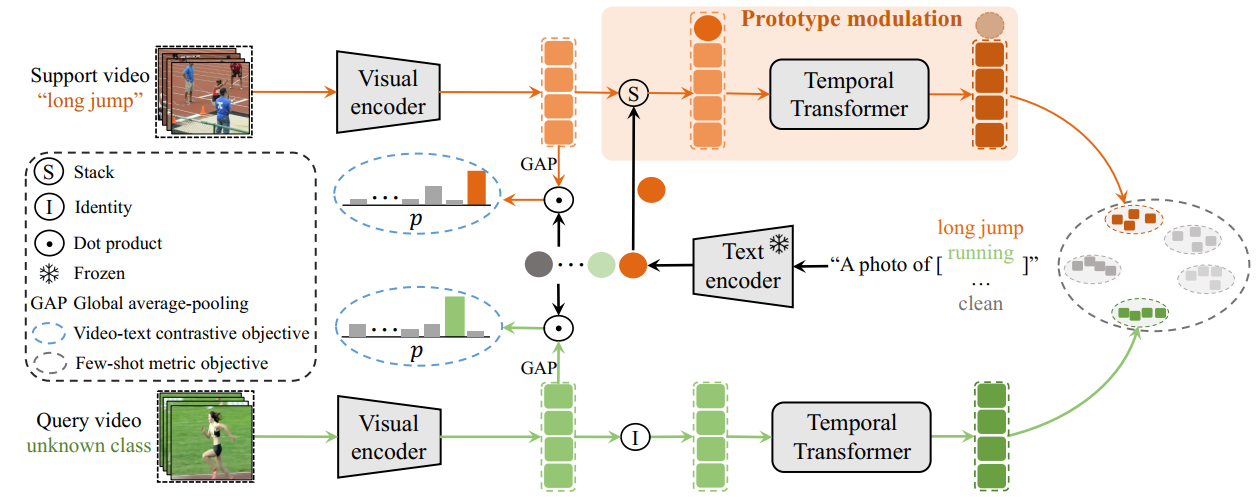Official Pytorch Implementation of CLIP-FSAR
CLIP-guided Prototype Modulating for Few-shot Action Recognition
Xiang Wang · Shiwei Zhang · Jun Cen · Changxin Gao · Yingya Zhang · Deli Zhao · Nong Sang
Abstract: Learning from large-scale contrastive language-image pre-training like CLIP has shown remarkable success in a wide range of downstream tasks recently, but it is still under-explored on the challenging few-shot action recognition (FSAR) task. In this work, we aim to transfer the powerful multimodal knowledge of CLIP to alleviate the inaccurate prototype estimation issue due to data scarcity, which is a critical problem in low-shot regimes. To this end, we present a CLIP-guided prototype modulating framework called CLIP-FSAR, which consists of two key components: a video-text contrastive objective and a prototype modulation. Specifically, the former bridges the task discrepancy between CLIP and the few-shot video task by contrasting videos and corresponding class text descriptions. The latter leverages the transferable textual concepts from CLIP to adaptively refine visual prototypes with a temporal Transformer. By this means, CLIP-FSAR can take full advantage of the rich semantic priors in CLIP to obtain reliable prototypes and achieve accurate few-shot classification. Extensive experiments on five commonly used benchmarks demonstrate the effectiveness of our proposed method, and CLIP-FSAR significantly outperforms existing state-of-the-art methods under various settings.
This code is based on pytorch-video-understanding codebase, which provides a comprehensive video understanding solution for video classification and temporal detection.
Requirements:
- Python>=3.6
- torch>=1.5
- torchvision (version corresponding with torch)
- simplejson==3.11.1
- decord>=0.6.0
- pyyaml
- einops
- oss2
- psutil
- tqdm
- pandas
optional requirements
- fvcore (for flops calculation)
Or you can create environments with the following command:
conda env create -f environment.yaml
First, you need to download the datasets from their original source (If you have already downloaded, please ignore this step ):
Then, prepare data according to the splits we provide.
The entry file for all the runs are runs/run.py.
Before running, some settings need to be configured in the config file. The codebase is designed to be experiment friendly for rapid development of new models and representation learning approaches, in that the config files are designed in a hierarchical way.
For an example run, open configs/projects/CLIPFSAR/kinetics100/CLIPFSAR_K100_1shot_v1.yaml
A. Set DATA.DATA_ROOT_DIR and DATA.DATA_ANNO_DIR to point to the kinetics dataset,
B. Set the valid gpu number NUM_GPUS
Then the codebase can be run by:
python runs/run.py --cfg configs/projects/CLIPFSAR/kinetics100/CLIPFSAR_K100_1shot_v1.yaml
If you find this code useful, please cite our paper.
@article{wang2023clip,
title={CLIP-guided Prototype Modulating for Few-shot Action Recognition},
author={Wang, Xiang and Zhang, Shiwei and Cen, Jun and Gao, Changxin and Zhang, Yingya and Zhao, Deli and Sang, Nong},
journal={International Journal of Computer Vision (IJCV)},
year={2023}
}
